► Audi and Nunam’s electric rickshaw
► Uses batteries from e-Tron development cars
► Built by trainees at Audi Neckarsulm
This, believe it or not, is the second rear-wheel drive, er… vehicle in Audi’s history. It may be a rickshaw but this particular one is special: it’s powered by e-Tron batteries.
Audi has worked with Nunam, an energy storage provider based in Germany and India, to take advantage of batteries that are no longer serviceable for an electric car and create something new with them.
As well as explaining to us the benefits of such a project, Audi even let us drive it (albeit briefly) inside its Brussels factory – the same place that manufactures battery packs and the brand’s Q8 e-Tron.
This may be the weirdest thing I’ve seen on CAR…
You’re very likely right. But Audi and Nunam are very keen to explain their reasoning.
‘More than 1.5 billion people are in energy poverty, and close to a billion have no electricity at all,’ says Nunam co-founder, Prodip Chattergee, highlighting how energy storage can be hugely beneficial for rural communities that have either irregular or no electricity access at all. ‘But the battery itself is an expensive component, so working out ways to reduce the cost of energy storage helps communities have more access.’
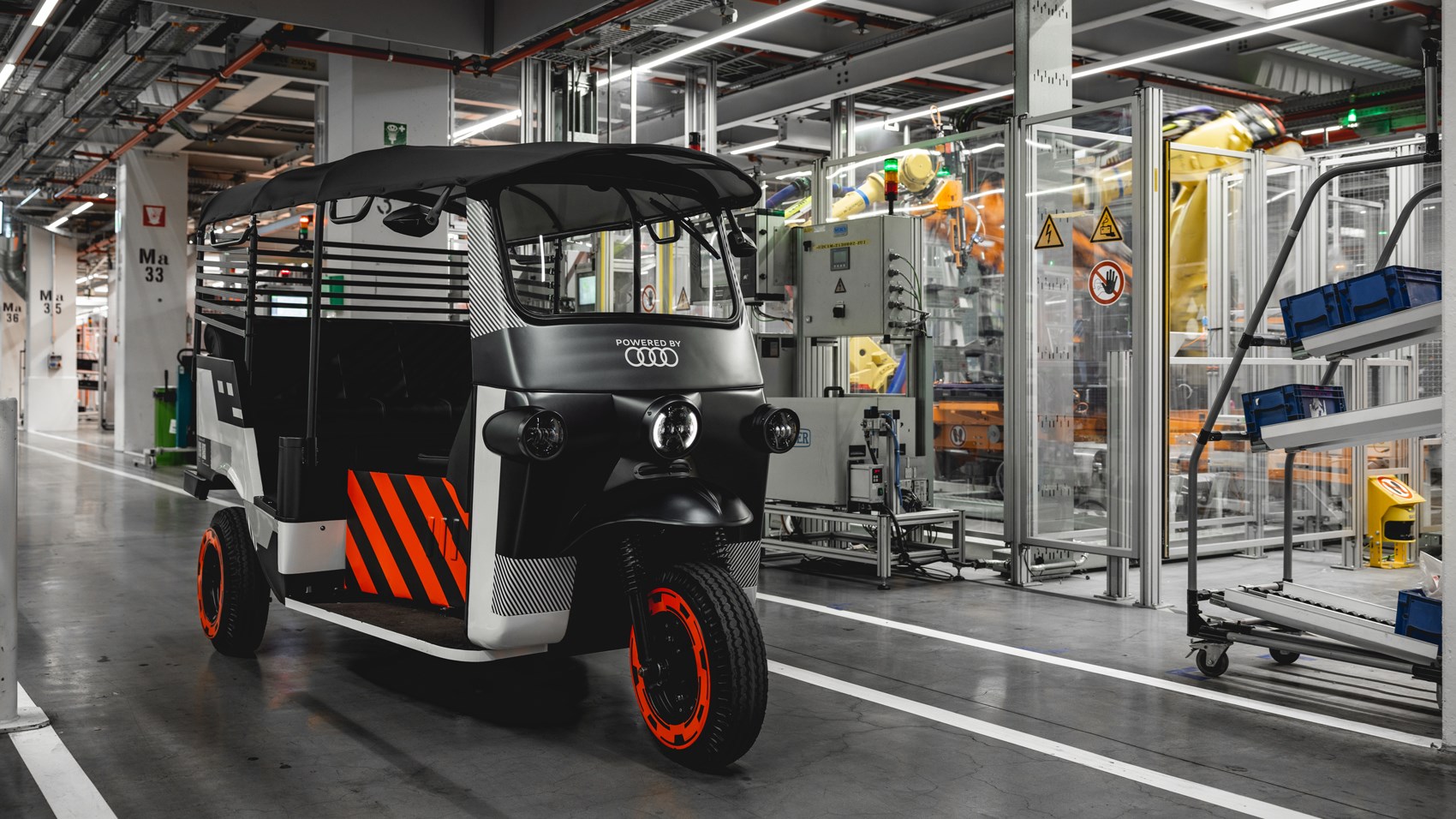
And, as many markets around the world slowly electrify, more and more battery-electric cars will hit the road, be used, and their battery packs will no longer become serviceable after years on the road. One, rather labour-intensive, way around the issue is to completely disassemble the battery pack down to its basic components and make a new one. Or, you could slice and dice the existing pack and repurpose it for other uses, therefore reducing e-waste.
Energy storage is a huge initiative, and one that’ll require more actual storage as the world pivots (very slowly) away from fossil fuels in its power plants. Solar and wind energy plants need batteries to store the power they extract, for example, and Nunam’s example of providing more stable energy in rural areas will require batteries, too.
And that’s how we get to the rickshaw…
Absolutely. Audi and Nunam say rickshaws don’t go very far or travel very quickly, meaning they have very different requirements for a battery, which allows degraded e-Tron modules to be deployed in the real world for longer. ‘For vehicles with lower range and power requirements, as well as lower overall weight, they are extremely promising. In our second-life project, we reuse batteries from electric cars in electric vehicles; you might call it electric mobility ‘lite’,’ says Chattergee. ‘We’re trying to find out how much power the batteries can still provide in this demanding use case.’
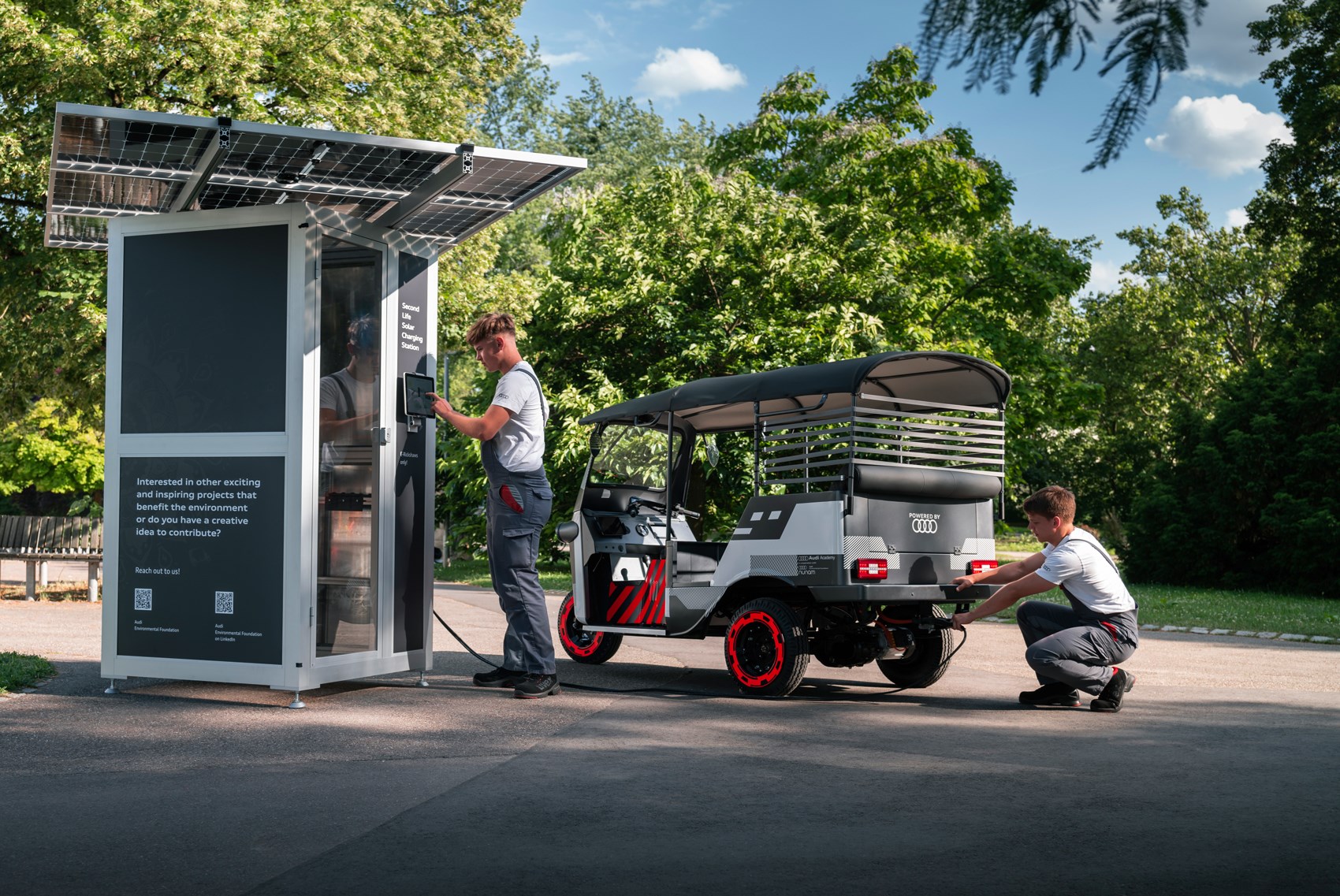
The aim is for the e-rickshaws (three have been built so far) to be used by non-profit organisations in India, including one that aims to help strengthen job opportunities for women. The plan is for the rickshaws to be supplied with a solar charging facility and energy storage solution.
The rickshaws were developed and built by Audi trainee engineers at the brand’s plant in Neckarsulm with intel and assistance from Nunam. ‘The trainees and Nunam are in constant communication with each other,’ says Timo Engler, head of automotive engineering and logistics training at Audi Neckarsulm, ‘it’s important that the trainees are involved in the project from start to finish and are given the freedom to contribute and try out their own ideas. ‘Learning by doing’ is our recipe for success. At the same time, we impart fundamental knowledge in the development of electromobility, resource efficiency, and charging technologies in an almost playful, incidental way.’
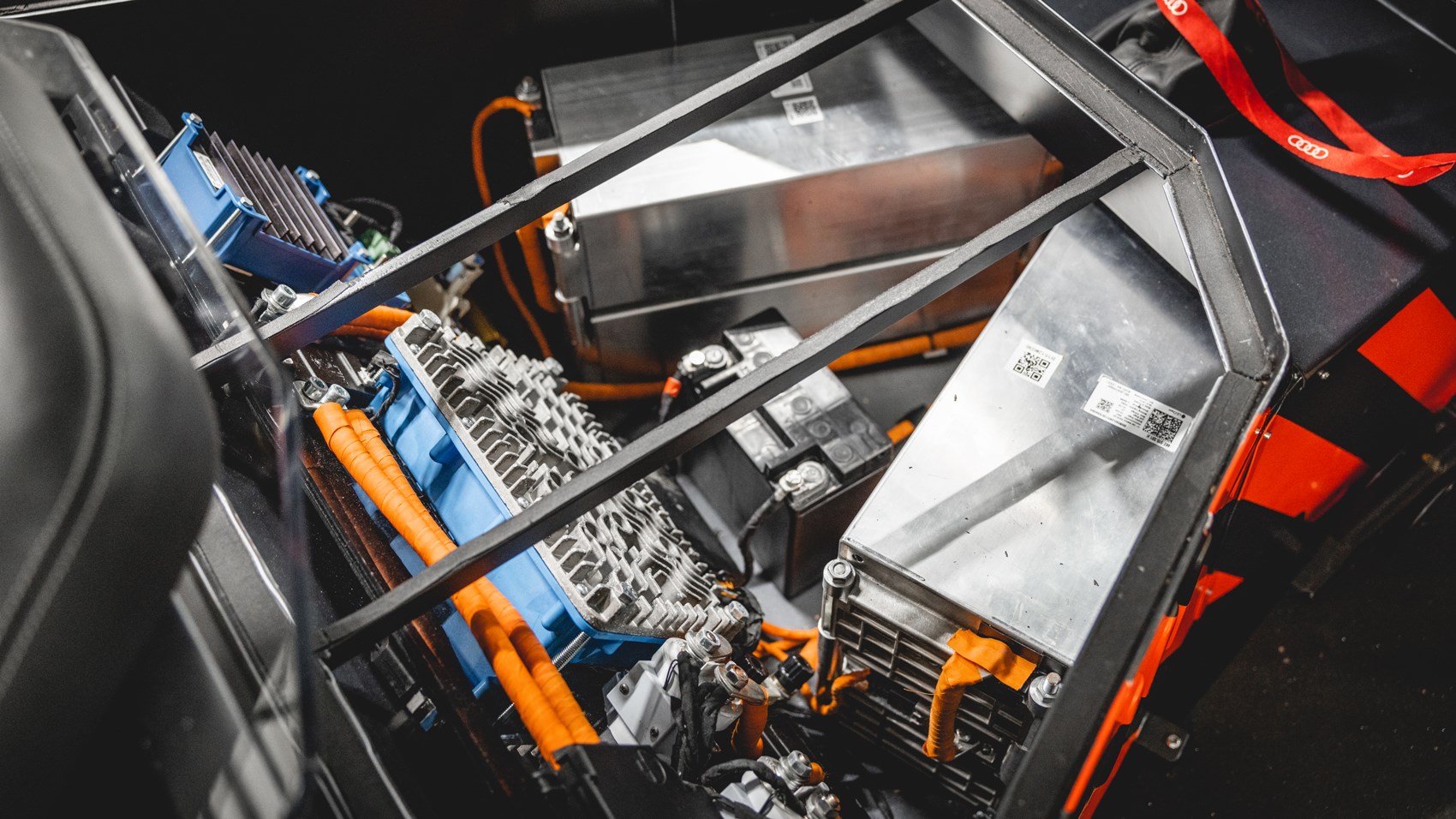
In the one we’ve driven, the original rickshaw was built in 1979 and it’s been heavily refurbished. The battery modules sit beneath the seat of the driver, and there’s an e-motor on the rear axle. ‘But the drum brakes are original,’ says Joachim Wloka from Audi’s Environmental Foundation, ‘so it’ll still stop like it’s from 1979!’
So, how does the e-rickshaw drive?
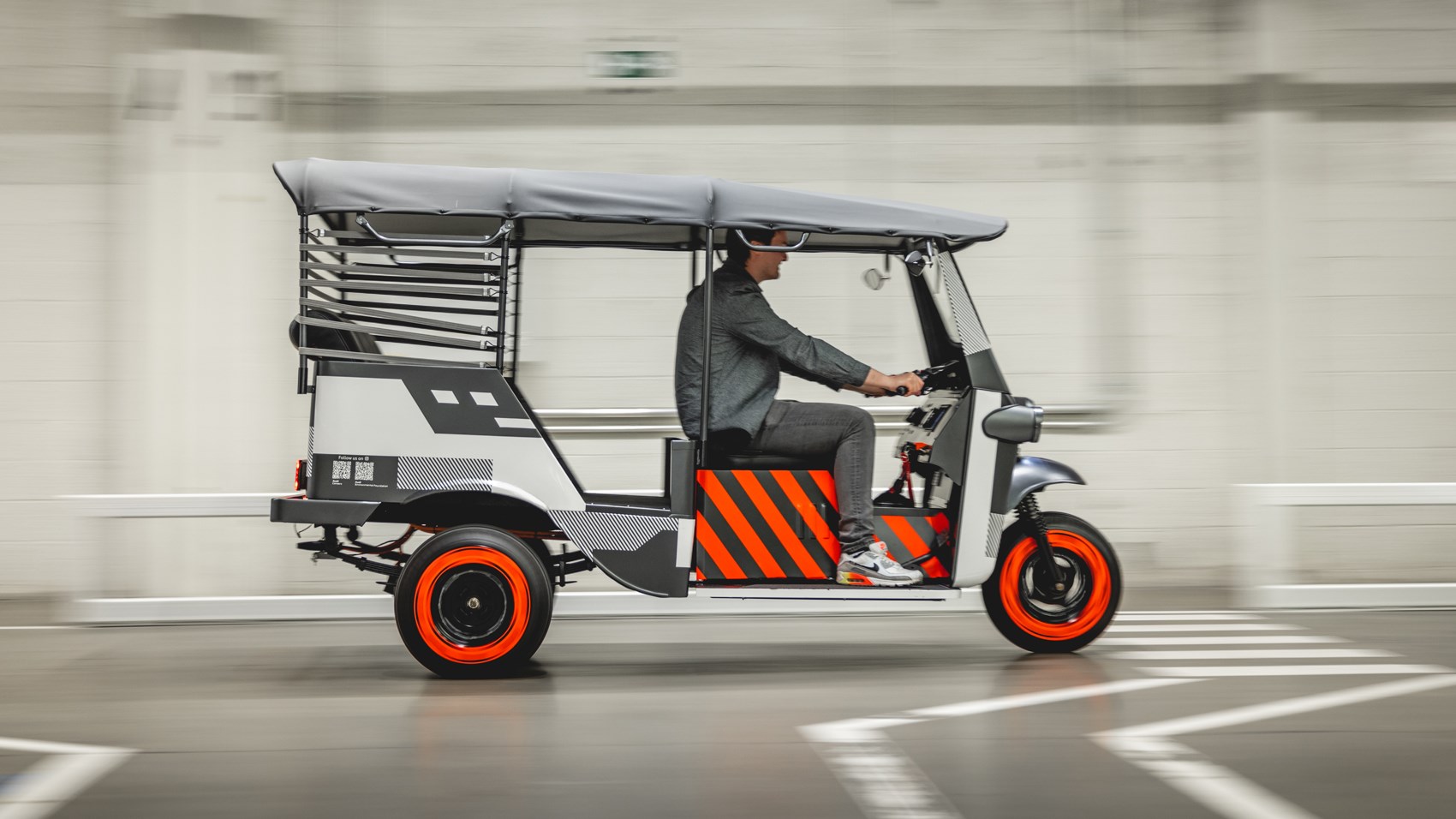
Twist the right-hand handle and the e-motor kicks instantly, where the initial torque quickly kicks the rickshaw into motion. As it (very slowly) builds pace, the electric motor whirs and the leaf-sprung rear end hops and skips even across what is a completely flat floor inside the Brussels factory. It jitters and hums, feeling like it’s almost as exciteable as the guy at the helm.
Turn the handlebars and you realise there’s not really a lot of actual steering – the turning circle is wide as you hit the lock of the steering quickly – and we’re warned not to turn in at full speed in case we roll it.
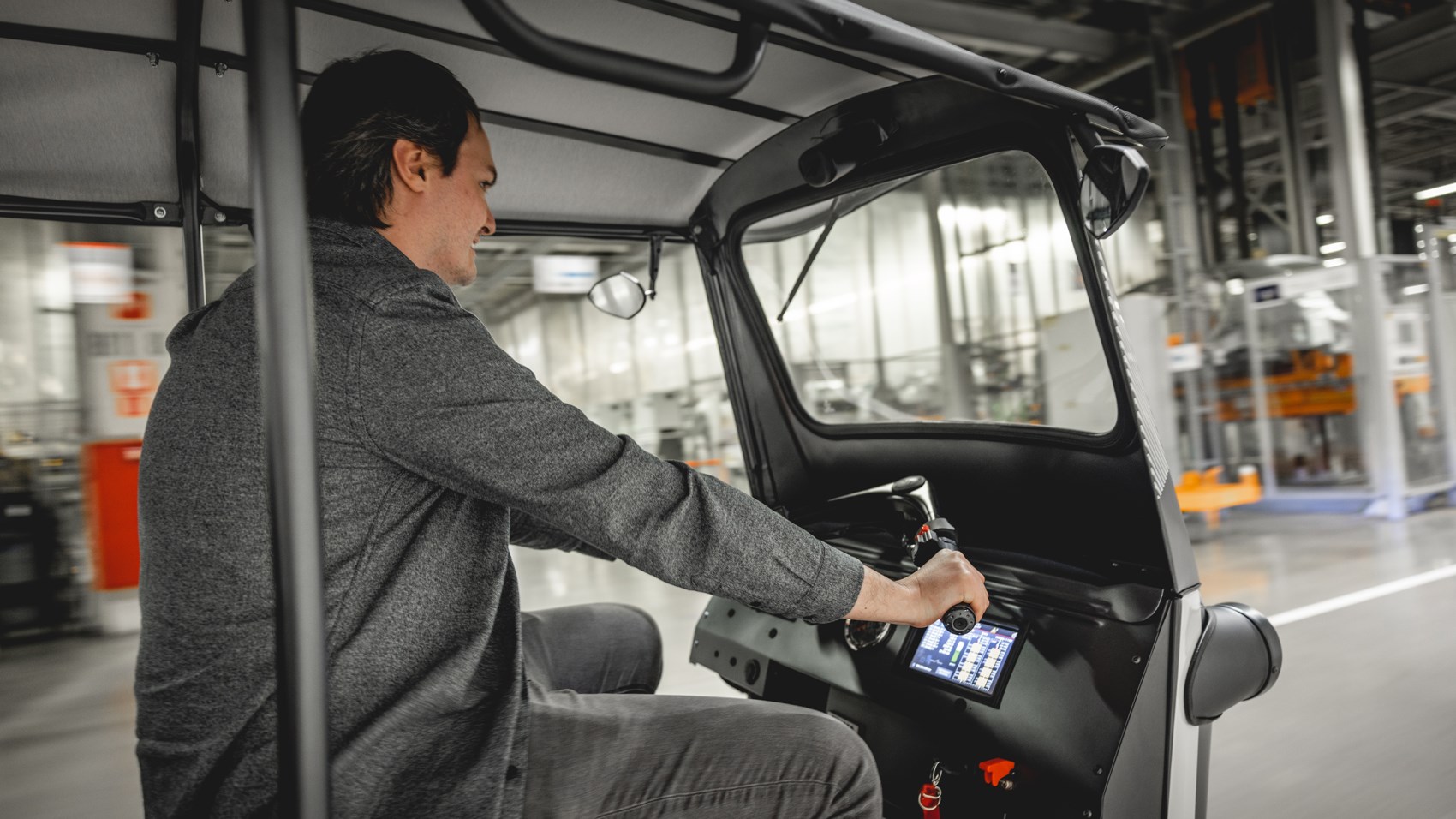
It’s not quick, it’s not comfortable and it’s not going to win any handling awards. But that’s very much not the point. It’s designed to be a handy tool for those in need, and it certainly ticks that box.
What it also manages to be is immensely charming. And, while those performance figures aren’t much better than walking, we’re willing to bet it’s a better performer out on the streets of India than a Tuk-Tuk with an engine. It’s fun, and certainly an example on the wackier end of how to use second life batteries. Wonder where Audi and Nunam will go next…